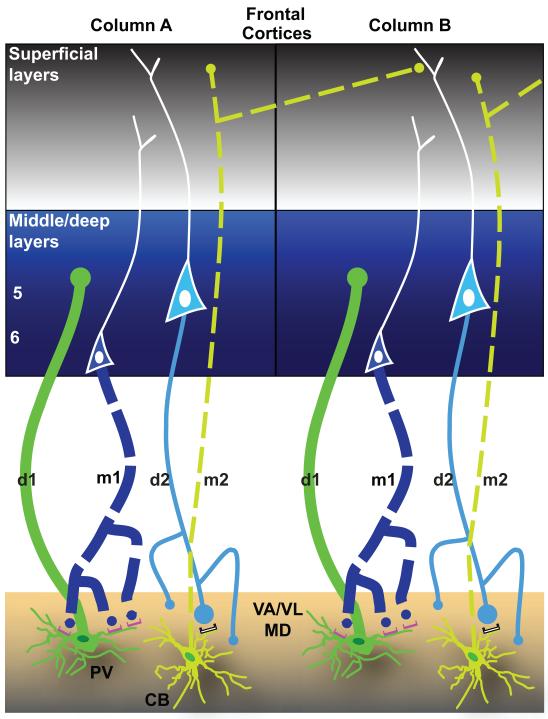Figure 6.
Two parallel systems link the thalamus with the cortex. Schematic diagram summarizes the features of reciprocal driving and modulatory corticothalamic pathways linking the frontal cortex with VA/VL thalamic nucleus. The thickness of the lines indicates the strength of the projection. The size of the dot denotes the size of the terminals. Solid lines (d1 and d2) represent driving pathways, and dotted lines (m1 and m2) represent modulatory pathways. Dark green represents PV, and light green CB thalamic projection neurons. There are two parallel circuits between prefrontal cortex and thalamus. One originates mostly from PV thalamic projection neurons (dark green, bottom panels), and terminates focally with large terminals in the middle layers (3b – 5a, center blue panels) of PFC (d1). In turn, layer 6 neurons project (m1) and terminate as numerous small terminals that form synapses mainly with PV thalamic projection neurons (dark green, bottom panels), through metabotropic receptors (mGluR1a, magenta). The other circuit originates in layer 5 (d2) and forms synapses through a mix of large and small terminals mainly on CB thalamic projection neurons (light green) with ionotropic receptors, white). The CB thalamic neurons, in turn, send widespread projections (m2) mainly to the superficial layers (1 – 3a) of frontal cortex (grey), and terminate mostly as small terminals that cross borders of neighboring regions and are intermingled with the apical dendrites of neighboring layer 5 neurons. All depicted pathways are excitatory and glutamatergic. Adapted from: Zikopoulos and Barbas, 2007b.

